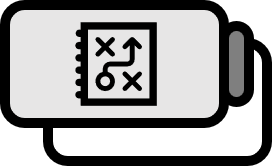Intron and Exon in Bioinformatics
Definition
The part of DNA in eukaryotes that actually involves in the synthesis of proteins is referred to as exon, while the part that does not is called intron.
Explanation
Prokaryotes and eukaryotes are differentiated by the presence or absence of a nuclear membrane in the cell nucleus, but an important difference from the perspective of bioinformatics is whether the process of splicing, which occurs after mRNA is transcribed due to the central dogma, exists or not. The transcribed mRNA of prokaryotes is exactly the same in terms of nucleotide sequence as DNA (only the major bases T and U are different), and translation into proteins occurs in that state. However, in the case of eukaryotes, after mRNA exits the nuclear membrane, it is cut out by the spliceosome leaving only specific parts.

In the figure above, 1,3,5 remain but 2,4 are discarded by the spliceosome. This is splicing, and if the mRNA in this state is translated, the information in 2,4 would not be used. According to the definition, green 1,3,5 would be exons, and blue 2,4 would be introns.
This mRNA, which only retains bases that actually involve in protein synthesis, is expressed in contrast to the original pre-mRNA as mature mRNA. Thinking in terms of the genome, it would mean that these are what truly have a genetic impact, the collection of all exons is called true genome (眞遺傳體). In English, it is referred to as exome, meaning the body (-ome) of exons.
Translated by Jo Jae-Chang, Dan E. Krane, Michael L. Raymer. (2007). Fundamental Concepts of Bioinformatics: p13. ↩︎
